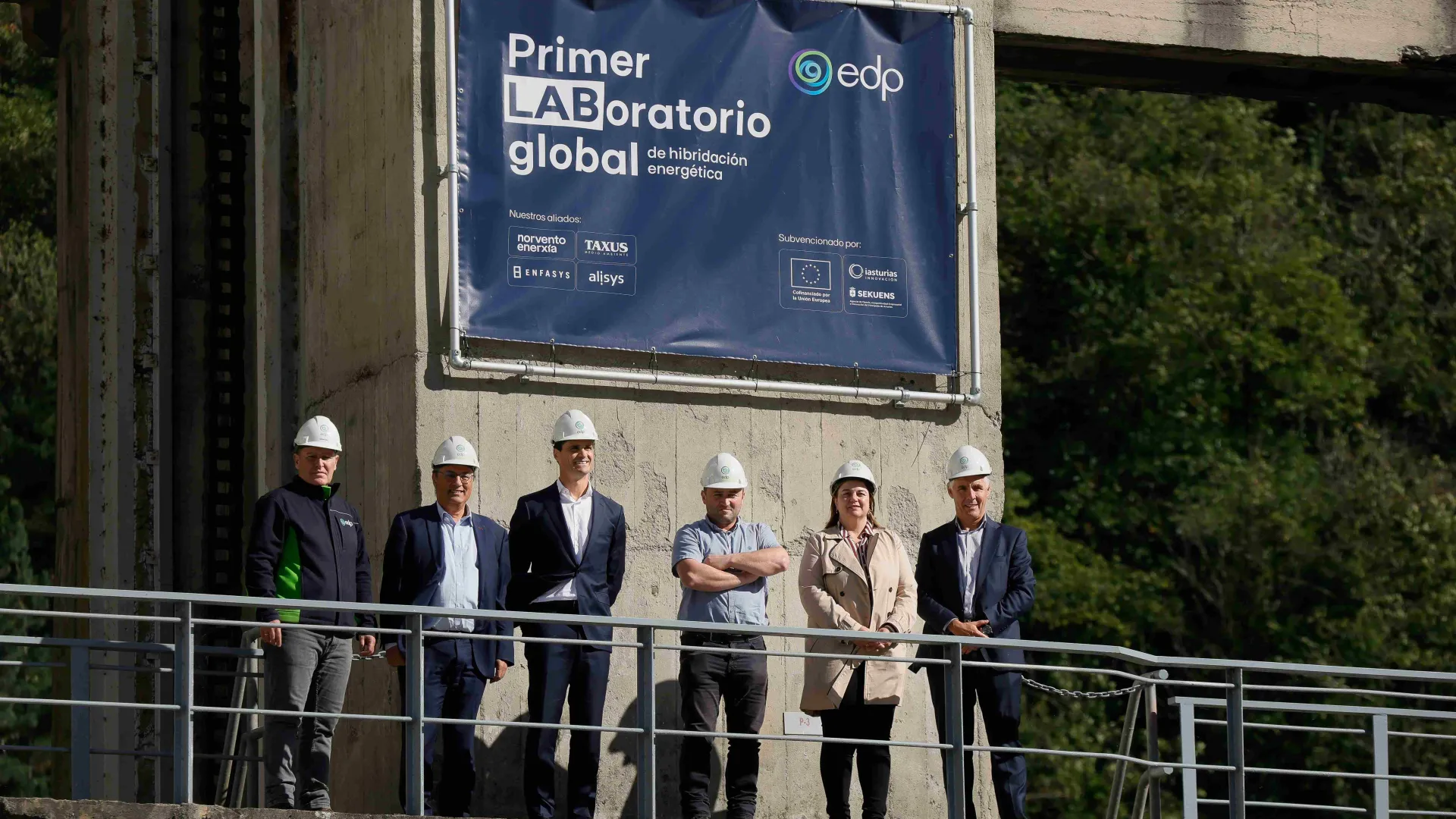
EDP presents the first energy hybridisation laboratory
Hydroelectric, solar and wind power generation, and a battery that stores electricity, controlled by an Energy Management System that allows decisions to be made on whether it is more efficient to store or discharge the energy generated from renewable sources. All this takes place at the same site, the La Florida dam in Pilotuerto (Tineo), and is connected to the electricity grid. This is the first energy hybridisation laboratory to integrate all these technologies, which will enable their operation to be studied so that the project can be scaled up to other facilities, while contributing to the generation of 100% renewable energy.
This laboratory operates in accordance with an Energy Management System (EMS) called ‘Enfyo’, which uses different algorithms and the situation of the electricity market to decide which technology should be used at any given time or whether the batteries should be charged or discharged. This maximises the efficiency of the generation sources and their contribution to the system.
In the current market and energy sector environment, where efficiency, resource optimisation and adapting the intermittency of some sources to consumer needs are increasingly necessary, this system will allow new ways of managing energy resources to be tested on an experimental and scalable basis, thereby accelerating the energy transition towards more sustainable and resilient models.
The generation capacity reaches 718 kW, distributed between 700 kW from a hydraulic power plant with hydro screws, a 15 kWp photovoltaic installation and a 3 kW wind turbine. Together, the laboratory can generate energy equivalent to the average consumption of 1,000 households (3,500 MWh) annually. In addition to these technologies, there are storage batteries with a capacity of 84 kWh.
The first and main source of energy generation is the hydro-screw power plant, which has involved an investment of around €3 million and is one of the first energy transition projects developed by EDP. It is one of the largest facilities of its kind in the world, with two hydro-screws in series, each 19 metres long and almost 4 metres in diameter.
To generate energy, it uses a maximum flow of 9,000 litres per second from the Narcea River, from the Pilotuerto reservoir.
These hydro screws, based on “Archimedes” screw' technology, consist of a hollow cylinder, located on an inclined plane, with a central axis and propellers along its entire length, to which an alternator is attached. Located directly on the water at the desired angle, they rotate slowly, harnessing the natural force of the water to produce electricity.
The hydro screws are made of carbon steel and together weigh around 100 tonnes, as much as 70 cars. In total, more than 30 people were employed in the construction and commissioning work, exceeding 12,000 man-hours.
In environmental terms, and as it is 100% renewable energy, this facility avoids the emission of 325 tonnes of CO2 per year, a positive impact equivalent to planting 24,000 new trees.
This technology stands out for its ease of implementation and its lack of environmental impact. It does not involve diverting water from rivers or building new dams or reservoirs. All that is needed are small pre-existing drops, which, combined with fish ladders, allow fish to pass upstream and downstream. It is a ‘fish-friendly’ technology, i.e. it allows fish to pass through without causing them any harm. A fish ladder has also been built at the plant, parallel to the hydro screws, to facilitate the upward movement of fish.
The initiative has received €355,000 in funding from the Ministry for Ecological Transition and Demographic Challenge through the European ERDF funds for innovative renewable energy projects.
In addition to the hydro-screw power plant, a photovoltaic installation and a wind turbine have been added, as well as a storage battery, turning this site into an energy hybridisation laboratory, for the development of which EDP is acting as the driving force behind the innovative ecosystem in Asturias, collaborating with Enfasys, Norvento, Taxus and Alysis.
The hybridisation project with the storage battery has been carried out with Norvento, also integrating an Energy Management System (EMS) developed by Enfasys, which allows all the laboratory's technologies to be managed. This research has involved an investment of €310,000 and is publicly funded by the Government of Asturias through the Sekuens Agency.
EDP is also collaborating with Taxus and Alisys on the Ictioscrew project, which involves recording and analysing the fish population that passes through the facility via the fish ladder. The aim is to count the number of fish, identify the species and their condition, among other parameters. This initiative involves an investment of €380,000 and is also funded by the Sekuens Agency.